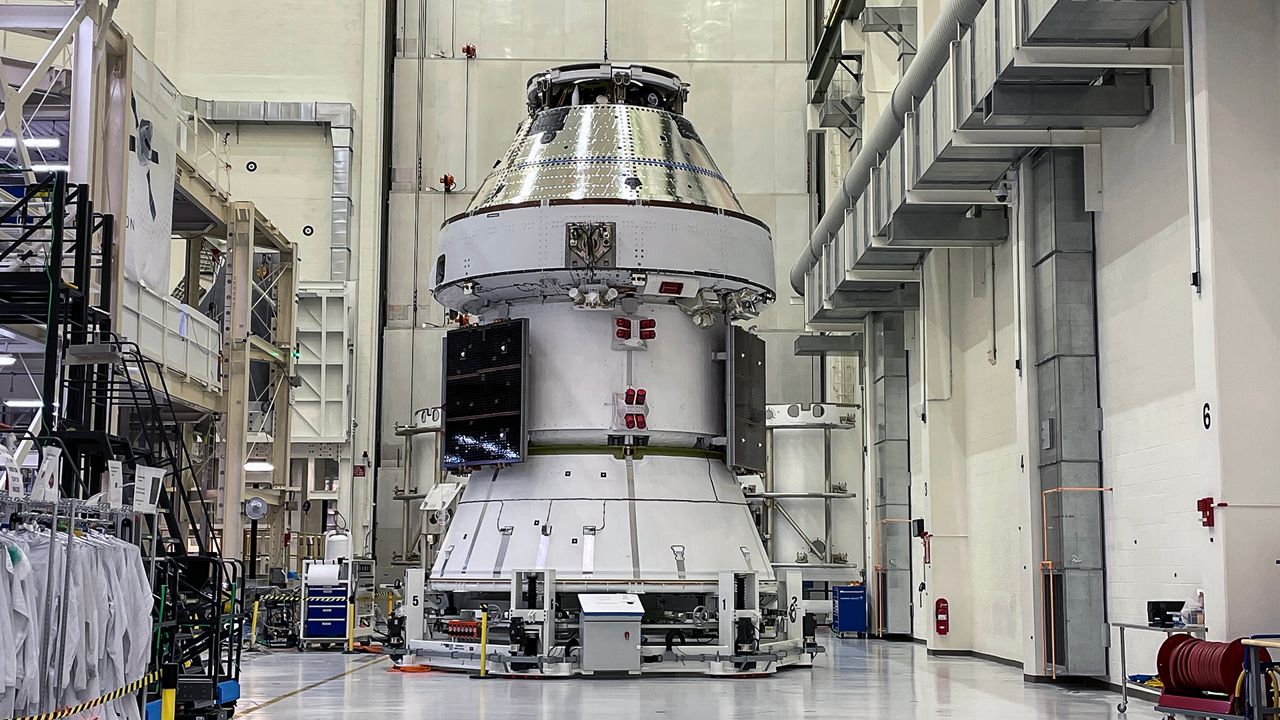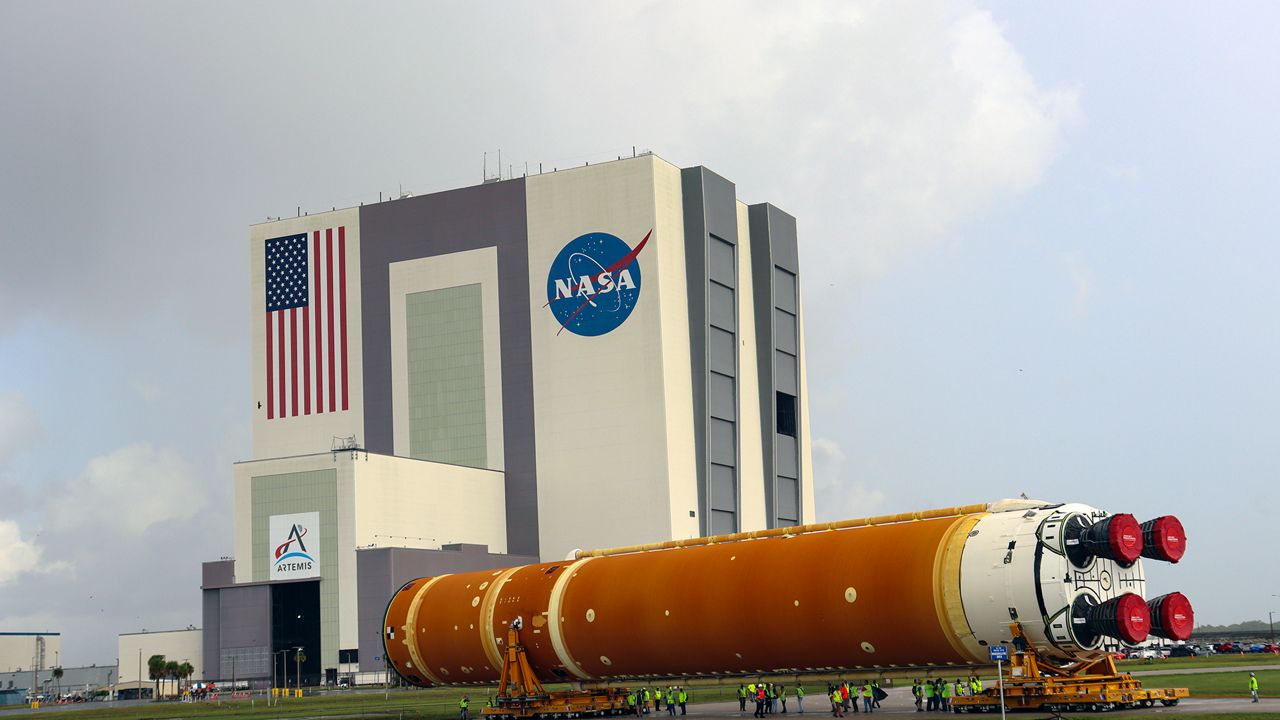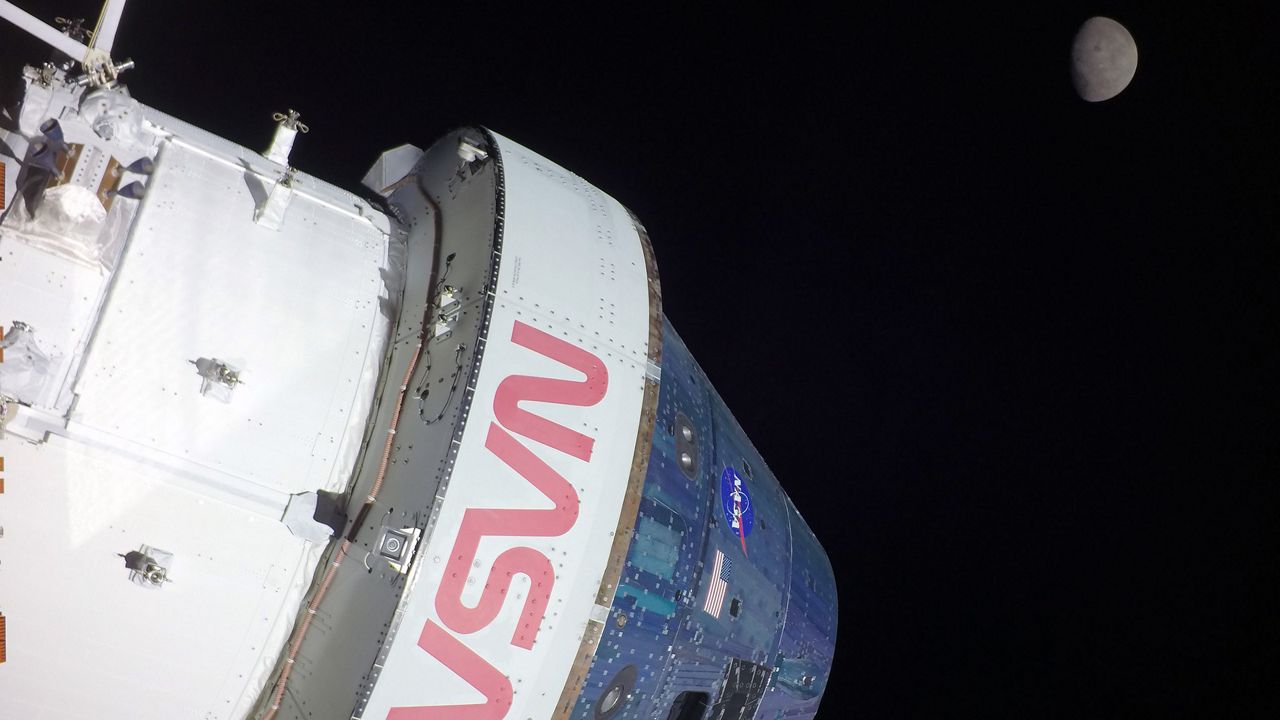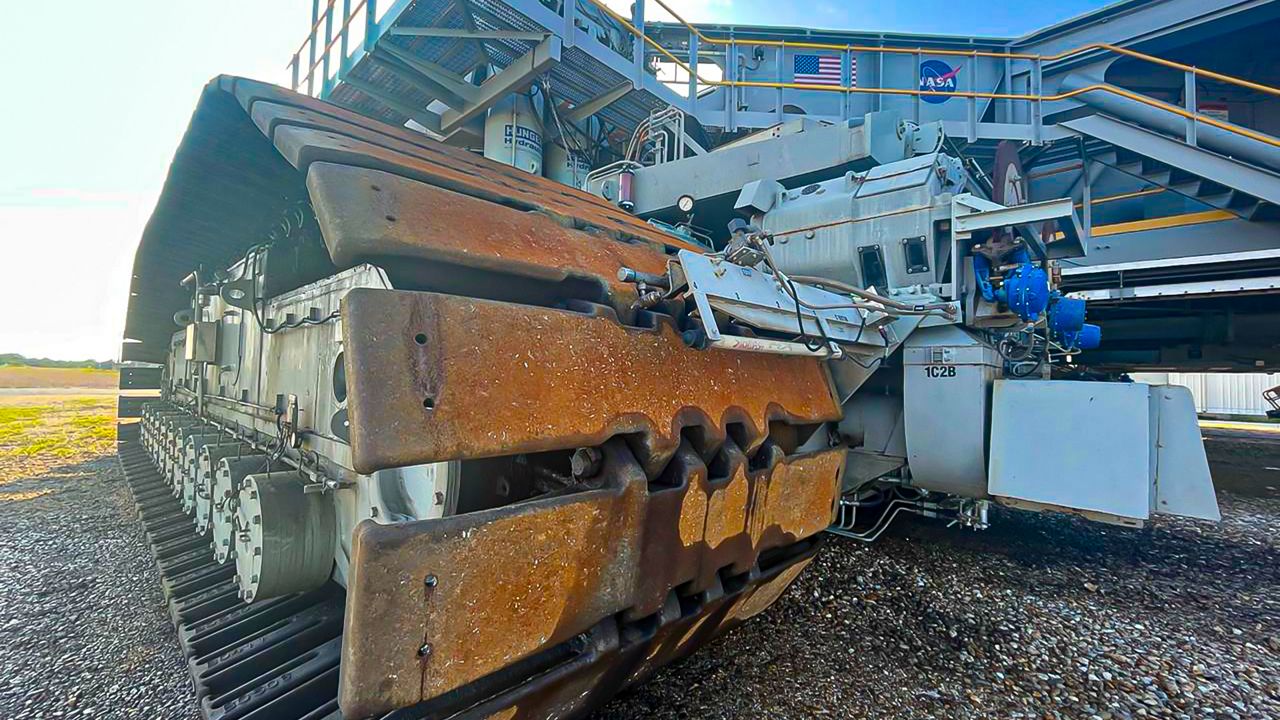KENNEDY SPACE CENTER — NASA’s Artemis II crew got a first look at the Orion spacecraft that will take them for an orbit around the moon.
What You Need To Know
- The Artemis II mission is expected to happen November 2024
- Engineers are ready to continue with performing tests of the Orion spacecarft
- Investigations into the capsule’s heat shield may delay November 2024 launch
On Tuesday, NASA astronauts commander Gregory Reid Wiseman, pilot Victor Glover, mission specialist Christina Koch and Canadian Space Agency astronaut and mission specialist Jeremy Hansen got the chance to inspect their ride while visiting the Kennedy Space Center.
"That little spacecraft is going to hold these four little humans, that will be going on a nine-day journey, 250,000 miles away from Earth. That is pretty wicked awesome," said Wiseman.
"The biggest thing for our crew is setting the stage four our colleagues for Artemis III and Artemis IV. Doing everything we can to make sure that the Orion spaceship is ready for humans," added Wiseman.
Engineers are ready to continue with performing tests of the flight hardware including an acoustic test, where noise levels of 140 decibels are used to blast the spacecraft to replicate the vibration response that the Orion capsule may see during its flight
"That will be a workmanship screen that will make sure that when we launch the spacecraft, when it sees those similar sound pressure levels that all of the hardware and work that we put into it, that everything is secured properly and it all still works,” said Sarah Malatesa, Lockheed Martin’s system integration and test engineer.
Another one of the crucial components of the mission is the European Space Agency's (ESA) service module, which will provide essential life support resources such as water, oxygen, nitrogen, thermal control, propulsion and electricity.
"We are now in the final step of integrating and completing some last work remaining on the thermal protection which still needs to be attached. Other than that, the vehicle is more or less complete and is about to integrated with crew module," explained Kai Bergemann, the deputy program manager for Orion and European Service at Airbus Defence and Space.
All of this work is being carried out inside the Operations and Checkout Building at the Kennedy Space Center. The facility has become a hub of activity, as it hosts the assembly, integration, and testing of hardware components spanning Artemis missions II through IV, including Orion Crew capsules 3 and 4 along with the European Space Agency’s service module for Artemis II mission.
Pilot Glover spoke about the excitement that is building among the Artemis generation.
"It (has) been a real privilege to able to interact with so many young people, period, and that's a part of this job, all astronauts get to do that. But when folks find out, and I don't care what age, big kid and little kids, when they find out that were a part of that mission that's going back to the moon for the first time in over 50 years, it just adds a layer of wonderment and excitement," he said.
However, the launch, set for November 2024, might be pushed back.
Investigations into the capsule’s heat shield, however, could delay this first lunar trip by astronauts in more than half a century. Last year’s test flight around the moon, with no one on board, resulted in unexpected charring and loss of material from the heat shield at the bottom of the capsule. The heat shield is meant to protect the capsule against the extreme heat of reentry.
The following mission of the Artemis program — a moon landing — faces even more hurdles and may slip from late 2025 into 2026. The main issue remains SpaceX’s Starship, the rocket ship that will carry two NASA astronauts from lunar orbit down to the south pole.
With only one test flight so far for Starship — resulting in an explosion a few minutes after liftoff in April — NASA is concerned whether Elon Musk’s SpaceX can pull everything off in time. The space agency will not commit to a moon landing using Starship, until SpaceX conducts multiple Starship orbital flights, sets up a refueling depot around Earth and completes a moon-landing dress rehearsal.
The Associated Press contributed to this story.









